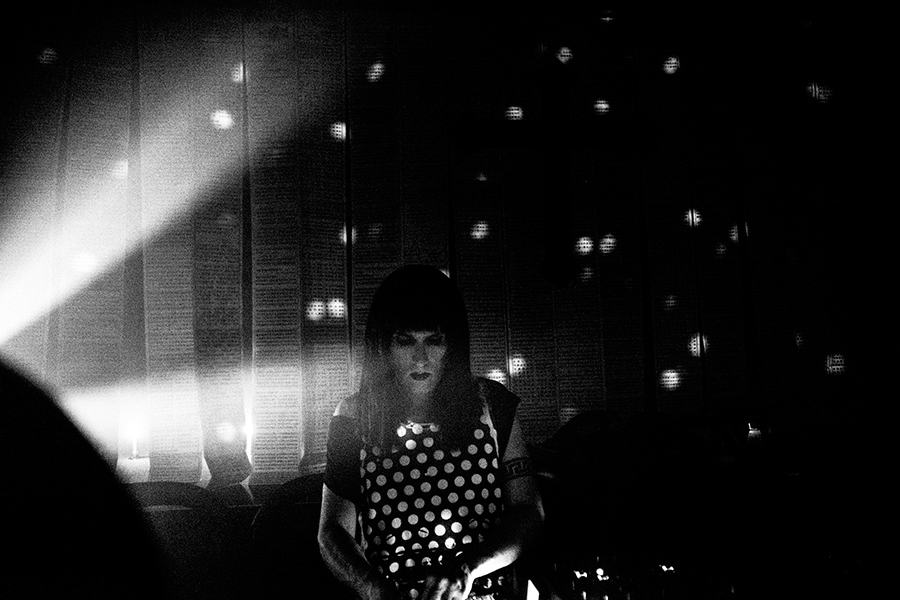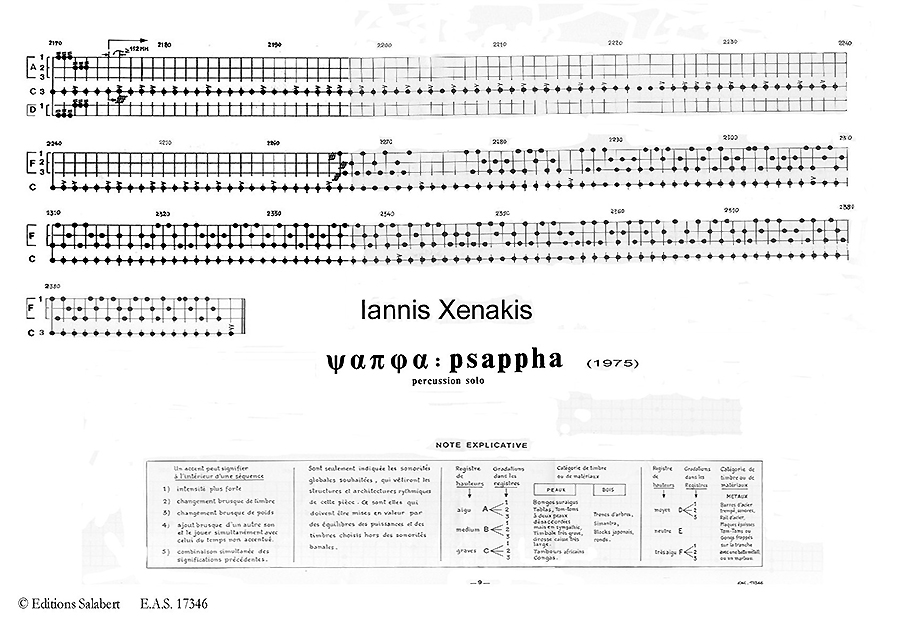SATURDAY 03.01.14 / 9 PM / $8
MACHINES WITH MAGNETS / 400 MAIN ST. / PAWTUCKET, RI
CTRL+ALT+REPEAT
CTRL+ALT+REPEAT is an experimental music series that was founded in 2004 by Mark + Laura Cetilia out of an interest in exploring the intersections of electronic music, improvisation, contemporary classical music, and sound art. This edition marks the tenth anniversary of the series, and will feature performances by Rrose, Blevin Blectum, Shawn Greenlee and Schaulust, along with Iannis Xenakis’ Psappha, interpreted by percussionist Piero Guimaraes. In addition to commemorating a decade of challenging musical practice through a focus on rhythm and noise and presenting a rare US appearance by enigmatic experimental techno artist Rrose, the night also doubles as a celebration of Blevin Blectum’s new album, Irradiance, due out on Estuary Ltd. on March 1.

RROSE
The Rrose project was launched in 2011 with a string of releases on the Sandwell District label, including a collaboration with Bob Ostertag. Intricately textured and experimental yet wholly at home on the dancefloor, the music of Rrose channels the spirit of techno’s roots while injecting influences from pre-techno electronic music and the avant-garde. Other identifying features include a focus on the tactile qualities of sound and the integration of gradual, interconnected transformations of material. In 2012, Rrose launched Eaux, a label devoted to solo productions and collaborations.
![]()
![]()
BLEVIN BLECTUM
Blevin Blectum (Bevin Kelley) is an electronic music composer/performer and a multimedia artist. With Kristin Erickson she is half of the duo Blectum From Blechdom, co-winners of the Prix Ars Electronica 2001 Digital Music Distinction prize. Her work successfully inhabits electronic toys, theater spaces, film scores, advertisements, clubs, concert halls, and art spaces. Working solo and in collaboration, she has released half a dozen records since 1998, on labels such as Tigerbeat6, Orthlorng, Phthalo, and Aagoo. Kelley currently lives and works in Providence, Rhode Island. She plans to complete her PhD in Computer Music and Multimedia from Brown University in May 2014.
![]()
![]()
SHAWN GREENLEE
Shawn Greenlee is a composer and sound artist. In recent compositions, performances, and installations, he focuses on the interpretation of visual image as sound via computational methods. Further areas of investigation evident in his work include signal processing, audio-visual programming, field recording, and psychoacoustic phenomena. Greenlee is Assistant Professor of Foundation Studies at the Rhode Island School of Design (RISD). He earned his Ph.D. in Computer Music & New Media at Brown University (2008) where he was affiliated with MEME (Multimedia and Electronic Music Experiments). Other education includes an MA in Computer Music & Multimedia Composition from Brown University (2003) and a BFA in Printmaking from the Rhode Island School of Design (1996).
Since 1992, Greenlee has been standing at the epicenter of Providence’s panicked music scene, and is best known for his solo electronic music under his own name and the Pleasurehorse moniker (1997-2007), as well as for founding and performing in the frenetic rock group, Landed (est. 1997). Other points of reference include his membership in the band, Six Finger Satellite (1999-2001), and his role in Providence’s warehouse community of the late 90s including, the art collective and venue, Fort Thunder. His discography spans over fifty releases to date on labels including IYNGES, Load, Utech, Corleone, Vermiform, Hospital Productions, and History of the Future.
![]()
![]()
SCHAULUST
Schaulust is a study in light and sound: an investigation of structure and rupture, of rhythm and noise. Schaulust performances are sensorial exercises focused on developing an awareness of the conditions of observation. These events pair custom hardware and software designed specifically for use in real-time improvisation with stroboscopic light and robotically-controlled mirrors, resulting in a full-body experience that embraces the base pleasures afforded by the generation and manipulation of light and sound as physical objects, evolving over time from the hypnotic to the chaotic.
![]()
![]()
IANNIS XENAKIS
Iannis Xenakis was born in 1922 into a Greek family residing in Braila, Romania. The sense of being an ”outsider” remained integral to his identity, as the title of a recently published book of interviews signals: “il faut être constamment un immigré.” Xenakis lost his mother when he was five years old, then was sent off to boarding school on the Greek island of Spetsai at age ten. He studied civil engineering at the Athens Polytechnic, but the German invasion followed by the British occupation drew him into the Resistance, activities from which he would end up near fatally wounded, losing one eye, then later condemned to death. Forced to escape his country, Xenakis ended up in Paris, wanting to study music, but earning a living working as an engineering assistant for Le Corbusier.
His creative and intellectual intensity attracted the attention of both the renowned architect, who delegated architectural projects to him in spite of his lack of professional training, and the composer and pedagogue Olivier Messiaen, who saw in the music he was struggling to produce in isolation an originality deserving of encouragement. Xenakis had his first major succès du scandale with the premiere of Metastasis at the Donaueschingen Festival in 1955, and by 1960, he was able to devote himself entirely to composition.
Critical of other developments in contemporary music at the time, dominated by the serialists (“Darmstadt school”) such as Pierre Boulez, Luigi Nono, and Karlheinz Stockhausen, Xenakis followed his own path, aided by his background in mathematics, engineering and design, and by his interest in complex sonic phenomena (rainstorms, street demonstrations, etc.). He incorporated probability theory into his compositional approach, as a means of generating and controlling large-scale events composed of massive numbers of individual elements. He also adopted the sonic entity (texture) as the primary material for the construction of musical form (rather than themes, or pitch structures).
Along with his acoustic works, he has produced a number of important electroacoustic pieces, and a series of multimedia creations involving sound, light, movement, and architecture (polytopes). In the domain of computer music, Xenakis was a pioneer in the area of algorithmic composition, and has also developed an approach to digital synthesis based on random generation and variation of the waveform itself. In addition, he designed a computer system utilizing a graphic interface (the UPIC), which has proven to be a liberating, provocative pedagogical tool as well as a powerful environment for computer composition.
Iannis Xenakis died on February 4, 2001, at age 78. He had been suffering from a number of serious ailments for several years. His last completed composition, O-Mega, for solo percussion and ensemble, written for Evelyn Glennie and the London Sinfonietta, was premiered at the Huddersfield Festival of Contemporary Music in November 1997. The American premiere was given in Alice Tully Hall with Samuel Solomon as soloist with the New Juilliard Ensemble. His “retirement” was enforced by a loss of memory that made it impossible to compose, and by increasingly frequent periods in the hospital, lapses into coma, and so forth. At the same time, however, Xenakis continued to be feted around the world. He was awarded the Kyoto Prize (Japan) in 1997, the UNESCO International Music Prize in 1998, and the Polar Prize (Sweden) in 1999. In December 2000, the world premiere of a couple of his very early works, from the Anasteria triptych based on an ancient Greek rite, took place in Germany, almost 50 years after they were composed (1952-53).
Xenakis’s legacy will be discussed for some time to come, no doubt. His music and thought will continue to exert an important influence on contemporary music. Hopefully, performers and producers will be spurred to program more of Xenakis’s music, and to record more of it for commercial release. There are still a good number of powerful, fascinating pieces that need to be better known.

PSAPPHA
performed by Piero Guimaraes (percussion)
Psappha (Edition: Salabert, 1975) is a musical composition for multi-percussion solo by Greek modernist composer Iannis Xenakis. The work does not include specific instrumentation, although the composer calls for three groups of wood and/or skins and three groups of metal instruments. The actual printed performance score is written in a unique graph notation and consists of 2,396 segments and presents a greater demand on the performer due to this unique style.
“Psappha” is an archaic form of “Sappho,” a great Greek poetess from the Island of Lesbos, born in the 6th century BC. Her style was sensual and melodic, and she was one of the first poets to write from the first person, describing love and loss as it affected her personally. The target of her affections was most commonly female, and today both her name and place of residence have become synonymous with woman-love. This emotion and sentimentality does not seem to manifest in Xenakis’ interpretation.
Written for six groups of instruments, three of wood and/or skins and three of metal, Psappha is sharp, brittle, and even violent at times. This intensely masculine work seems almost in contradiction to its title. The inspiration here, however, manifests not as aesthetic, but as structure. The work’s rhythmic structures are derived from small rhythmic cells characteristic of Sappho’s poetry. These rhythms pervade the entire work and make both local and large scale appearances. Much of the specifics of instrument choice is left up to the performer: Xenakis writes, “timbre serves only to clarify the rhythmic structures,” suggesting the “words” of this poem are only a secondary color to the structures that contain them. –Samuel Solomon
![]()
![]()
PIERO GUIMARAES
Percussionist Piero Guimaraes stands at the forefront of a new generation of international performers specializing in orchestral and contemporary music. A native of Brazil, Guimaraes presented the Brazilian premiere of several pivotal works by influential composers including Iannis Xenakis, Steve Reich and Peter Eotvos. Guimaraes concertizes extensively, having made his mark in halls across the United States, Brazil, Austria, Germany, Spain, and Holland. A versatile player, Guimaraes is a frequent participant in orchestral and contemporary music festivals including The World Orchestra, International Ensemble Modern Academy, Pommersfelden Summer Akademy and the Percussive Arts Society International Convention. He has collaborated extensively with living composers, working with John Luther Adams, Heinz Holliger, and Kaija Saariaho to name only a few. Additionally, Guimaraes has performed under the baton of many world-renowned conductors including Maestro Kurt Mazur. Guimaraes earned his bachelor’s degree from Sao Paulo State University in Brazil and his master’s degree from SUNY Stony Brook in New York. He is presently a doctoral candidate in percussion performance under the instruction of Eduardo Leandro.
Around the New York contemporary music community, Guimaraes has performed at venues such as Merkin Hall, Symphony Space, and Roulette. In addition to his solo career, Guimaraes serves as a core member of the Iktus Percussion ensemble. Guimaraes and Iktus delivered both world premieres and presented master classes in the elite music departments of Queens College, Oberlin Conservatory, Michigan State University. the University of Michigan, and the University of Wisconsin at Madison. As a member of the duo What Where with French pianist Julia Den Boer, he was jointly awarded a prize winner in the coveted Ackerman Chamber Music Competition.
